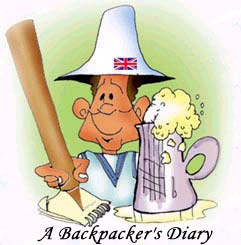 December 10, 2001
December 10, 2001
Mohali - A fan's delight
- Jonathan Dyson
It says a lot that despite the presence in Mohali of all the depressingly familiar features of an England Test performance - mystifying selections, remarkable batting collapses and the criminal misuse of promising positions to name a few - most England fans left the wonderful PCA Stadium on Thursday afternoon with a collection of fond memories.
The reception that greeted Tendulkar as he strode to the wicket late on the first day, the sight of Indian fans begging for attention from both local hero Harbahjan Singh and the TV cameras, and long passages of joyous interaction with Indian supporters, made my first Test abroad as much of a rewarding experience as I had hoped.
And while the two extraordinary batting collapses and the woeful dropped catches were as painful to watch as ever, I discovered that unlike in the familiar surroundings of the Test grounds at home, such frustrations do not tend to be the most resonant feature of a Test overseas.
For all four days, a group of us sat in the stand just to the left of the main pavilion. This provided both a great view of the cricket, and a tremendous atmosphere. On the first morning, as we wandered into the ground, ready for a wall of noise and unsupressed enthusiasm, much to our surprise, we found the stadium virtually empty.
However, as the morning session developed, the size of the crowd gradually increased, and by the afternoon, the atmosphere was more like what I had expected. This turned out to be the pattern each day, as the great majority of fans arrived late.
Another striking feature of the Indian crowd's behaviour was the supporters' almost obsessive determination to be filmed on television. Whenever a camera would as much as edge itself in their direction, there was a sudden explosion of arm-waving, cheering and chanting.
Having on several occasions been begged by hordes of Indian children to take a photo of them while wandering round the inner cities, this was one aspect of the Indian crowd culture that I didn't find surprising.
The love of banners among Indian fans was also clear. These ranged from the subtle, such as "Mark Waugh + Steve Waugh = Sehwag," to the comically poetic, like "Deep Das/You've the Class/Make the English lick the grass." Each banner was based around a jovial dig at the huge gap in talent between the two sides.
Yet for me the most rewarding feature of the Test was, rather than simply observing the Indian crowd, actually being a part of it. Due to the relatively tiny portion of England fans, it was inevitable that we would watch long passages of the game with Indian fans.
This proved a real treat, and was undoubtedly helped by the laissez-faire approach of the stewards. They were perfectly happy to see both sets of fans mingling together and enjoying themselves, though as soon as there were any signs of over-crowding or a fan's view of the cricket being blocked, they would take efficient, authoritative action.
One particularly unforgettable moment occurred when a young Indian fan was virtually thrown into the lap of one of the more vocal England fans. The Indian fan received a warm hug, before going back to cheer with his envious companions.
 To an outsider, I would guess that what made the interaction between the two sets of fans particularly touching was that we clearly enjoyed being together, despite our deeply contrasting feelings about what was happening on the pitch.
To an outsider, I would guess that what made the interaction between the two sets of fans particularly touching was that we clearly enjoyed being together, despite our deeply contrasting feelings about what was happening on the pitch.
It was also moving because the two sets of supporters were making every effort to get along, in spite of the fundamental differences in their crowd behaviour. While both sets of fans displayed uninhibited expressions of emotion, the ways in which this was done were radically different.
While the Indians often moved around in large groups, jumping and cheering and flag-waving, we tended to stay still, whether seated or standing, choosing instead to enjoy the hive of activity around us.
And while the Indians occasionally used songs to gently poke fun at the English, using numbers like "London Bridge is Falling Down," much of the rest of their cheering was composed mainly of instinctive shouting and arm-waving than any co-ordinated singing. They tended to let their banners - and the cricket - do the talking.
We, however, constantly found ourselves adapting football songs to the cricket. These included "Do you ever win away?," "Only sing when you're winning," and "Who are ya?," which was used when Tendulkar came out to bat. I guess it's all part of the eccentric English humour.
As I had suspected, the Indian fans on the whole showed a great liking towards the Barmy Army. This manifested itself not only in the continuous bantering and cheering between the two sets of fans, but also in the local media coverage.
Every day during the Test, there was a feature article about England fans together with a large colour photo in the Chandigarh Times. And on the Wednesday, four of us were interviewed on Star News. We answered questions on previous tours, how the Barmy Army came together, and, embarrassingly, I was asked if I knew any Hindi. Not a great deal was the answer, though I am working on it.
During our interview, which took place near the players' nets, England spinner Martyn Ball walked by. "We seem to be more famous than you," I joked, and I was met with a begrudging grin. It seems that English fans really are becoming as much a focus of media attention in India as the players. If the team aren't careful, we might even overtake them.
GE Features
©1996 to 2001 rediff.com India Limited. All Rights Reserved.